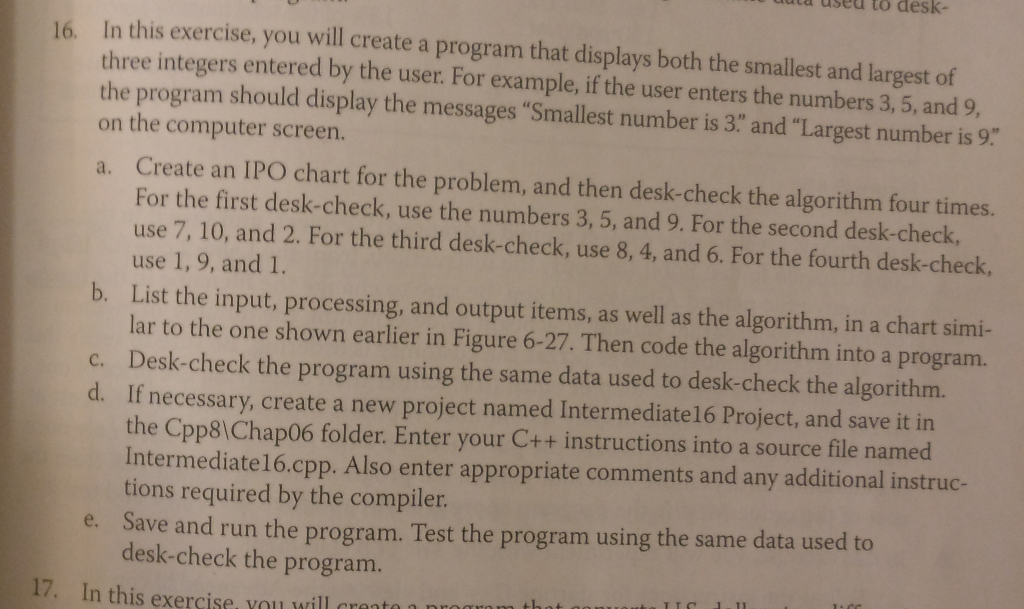Answered step by step
Verified Expert Solution
Question
1 Approved Answer
An introduction to Programming with C++, by Diane Zak, Eighth Edition Chapter 6, Exercise 16 dta useu to desk- In this exercise, you will create
 An introduction to Programming with C++, by Diane Zak, Eighth Edition
An introduction to Programming with C++, by Diane Zak, Eighth Edition
Chapter 6, Exercise 16
dta useu to desk- In this exercise, you will create a program that displays both the smallest and largest of three integers entered by the user. For example, if the user enters the numbers 3, 5, and 9, the program should display the messages "Smallest number is 3. and "Largest number is 9 on the computer screen. a. Create an IPO chart for the problem, and then desk-check the algorithm four times. 16. For the first desk-check, use the numbers 3, 5, and 9. For the second desk-check use 7, 10, and 2. For the third desk-check, use 8, 4, and 6. For the fourth desk-check, use 1, 9, and 1. List the input, processing, and output items, as well as the algorithm, in a chart simi- lar to the one shown earlier in Figure 6-27. Then code the algorithm into a program. Desk-check the program using the same data used to desk-check the algorithm. If necessary, create a new project named Intermediate16 Project, and save it in the Cpp81Chap06 folder. Enter your C++ instructions into a source file named Intermediate16.cpp. Also enter appropriate comments and any additional instruc- tions required by the compiler Save and run the program. Test the program using the same data used to desk-check the program. b. c. d. e. 17. In this exercise, you will cr enta n nroarStep by Step Solution
There are 3 Steps involved in it
Step: 1

Get Instant Access to Expert-Tailored Solutions
See step-by-step solutions with expert insights and AI powered tools for academic success
Step: 2

Step: 3

Ace Your Homework with AI
Get the answers you need in no time with our AI-driven, step-by-step assistance
Get Started


